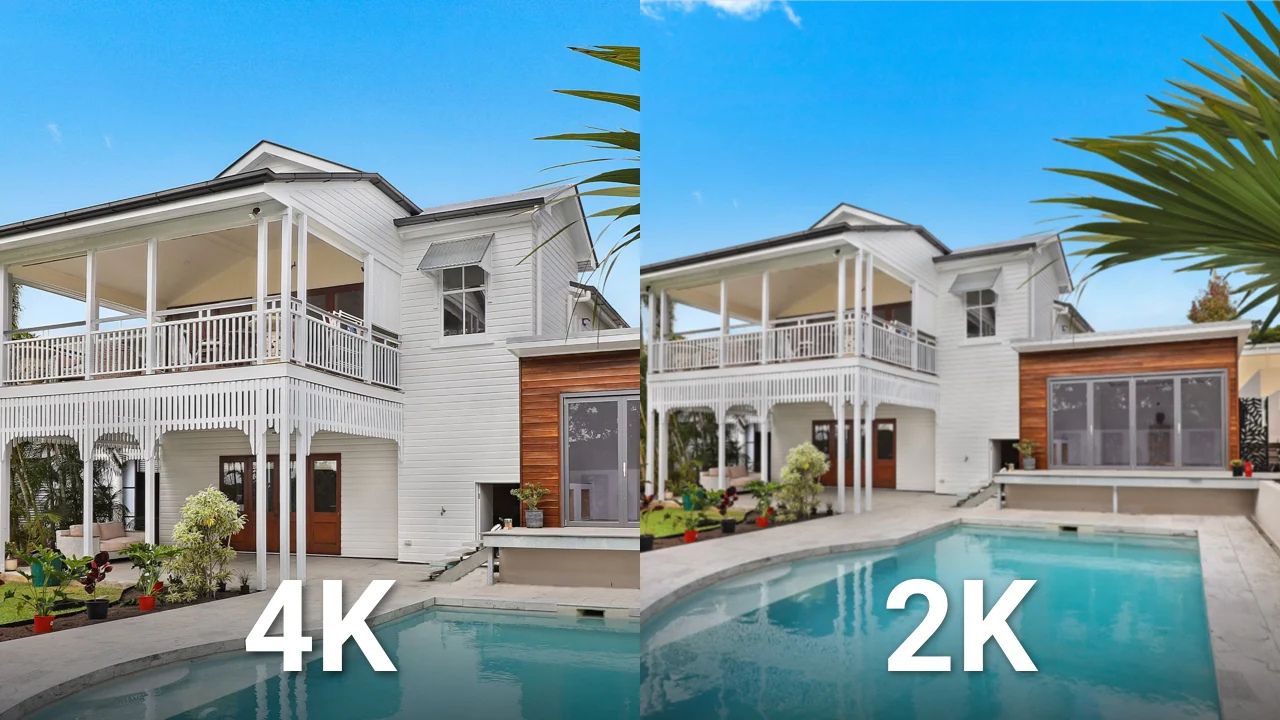The criteria of resolution are among the most important aspects that you should look at when selecting the right home or business security cameras. When you decide to buy the surveillance needs, it is crucial to understand the difference between 2K and 4K resolution. While both 2K and 4K provide polished images, there are profound differences concerning the sharpness of the picture, disk space, and the picture’s activity. To make it easier for you to decide, let’s look at these two resolutions in more detail.
What is 2K Resolution?
2K resolution is a term used to describe a display of about 2000 horizontal pixels, usually 2560 x 1440 pixels, in security cameras. This screen type is also called Quad HD (QHD), and its images are defined as clear as with Full HD but have a higher definition, 2K. It offers high resolution and, at the same time, has reasonable file sizes, which makes it suitable for home or small business security. Some of the brands include aosu, which has 2K security cameras that provide clear images during the night and do not take up a lot of storage space, hence making it wiser to invest in security cameras.
What is 4K Resolution?
4K, also known as Ultra High Definition, displays 3,840 x 2,160, four times the amount of pixels compared to Full HD. This leads to clearer, brighter, and more detailed images than less detail and focus; hence, you can take images of faces or objects in the distance. Suppose you need the latest technology. In that case, aosu’s 4K security cameras will give you the best resolution, especially when guarding areas of high-security and larger buildings where features should not escape the camera’s eye.
Comparing Image Quality
The fundamental change between 2K and 4K is the pixel density, the 2K cameras from aosu are good quality for most surveillance purposes but if the detail is important aosu has 4 very sharp K cameras. Regardless of whether you opt for 2K or 4K, aosu guarantees that your security system will provide you with the best quality images that meet your requirements.
Space and Link Needs
The major drawback of 4K over 2K is the storage and bandwidth because 4K cameras capture more data due to the higher pixel density and therefore the file sizes are bigger, aosu has both 2K and 4K cameras to suit your storage and bandwidth.
Cost Considerations
Cost is another factor in the decision to go with 2K or 4K. As a rule, if one technology is more advanced than the other, it is more expensive; thus, 4K cameras can usually cost more than 2K cameras. Furthermore, the storage and bandwidth requirements for an efficient capturing of 4K resolution may push up the overall cost for security. On the same note, 2K cameras cost less to acquire initially and possess operational costs in terms of storage space and bandwidth as well as data transfer costs compared to 4K cameras. The 2K category has been notably good for the money and sacrifices little image quality.
Why Zoom Matters?
Zooming is one of those tasks where you can tell the difference between 2K and 4K resolution. If one zooms in on the obtained footage, it becomes pixelated and less distinguishable when obtained from a 2k camera than when obtained from a 4k camera. At 4K zoom is much more effective as a fairly good deal of detail can be seen to distinguish objects or people at some distance away. If you anticipate using Zoom often in your surveillance, 4K will probably be the way to go to make sure that important details remain sharp.
Combination of Performance and Practicality
Selecting between 2K and 4K cameras varies depending on requirements for surveillance and practicalities such as costs, storage, and bandwidth. But if you require picture sharpness that puts most other formats to shame and are willing to make a major investment in infrastructure, 4K is your best bet. Nonetheless, if you want to achieve high quality with less stress on your system, 2K performs much better at a lower price. The information about the protected object and the purpose of protection will also be a decisive factor in choosing equipment.
Conclusion
Finally, depending on your surveillance requirements, you get your pick between 2K and 4K resolutions; while 4K cameras provide the finest detail, these are suitable for security, giant-area surveillance, etc. In contrast, 2K cameras are also perfect for recording different locations since they are of good quality and also not too expensive, and they take less space. One can choose a resolution that is suitable in line with security objectives based on a balance between image quality, storage, and cost.


